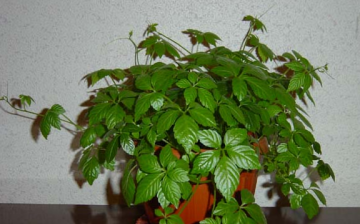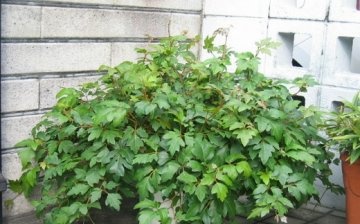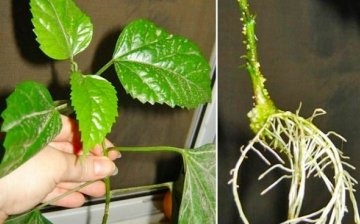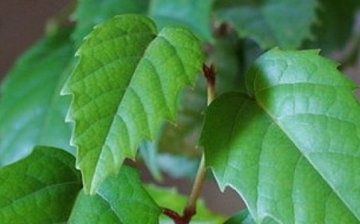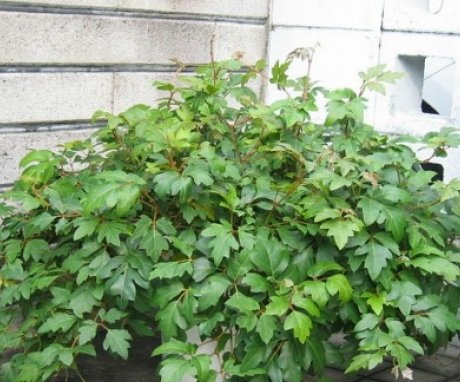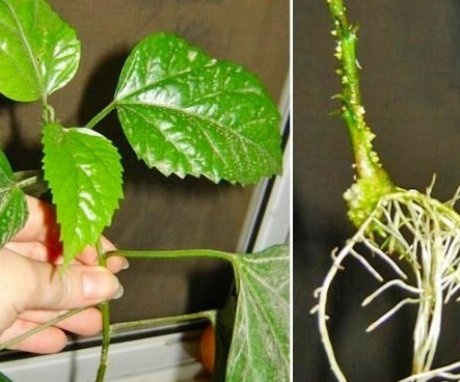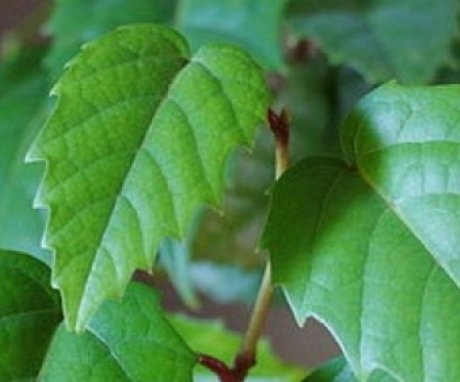Homemade cissus Antarctic: care, reproduction and possible pests
Cissus is not often found at home. The plant does not bloom, leaves and branchy shoots give it decorativeness.
Content:
What does cissus look like, popular species
The cissus plant belongs to the grape family. It is also called home grapes. Some types outwardly are really easy to confuse with the usual street grapes... Cissus on the shoots has antennae, its branches are formed in the form of vines. Although there are also erect shrubs with dense sinewy leaves.
Cissus grow naturally in tropical and subtropical climates.
The plant can be found in Australia, Southeast Asia and South West Africa. There are 350 cissus species in total, but most of them are not grown at home.
The following types are found in culture:
- Antarctic
- Diamond-shaped
- Multicolored
- Cactus
- Bayneza
- Jutta
The most common type for growing at home is Antarctic cissus. Although hot countries are the homeland of the plant, in culture this species is absolutely undemanding to lighting. It will actively develop in shaded conditions.
Outwardly, the plant looks like this:
- The leaves are dark green, ovoid in shape, the leaf is solid, but has small teeth at the edges.
- Below the leaf has a hairy structure, the same applies to the antennae, they are distinguished by a more red tint.
- Liana winds along a specially equipped support, it twists itself around with its antennae.
In indoor conditions, you can find rhomboid cissus. Shoots develop in the form of vines, have antennae. The leaves of this species are ternary, densely arranged. The lower part of the leaves is reddish.
As for the multicolored cissus, it is distinguished by large leaves that are heart-shaped. The shade of the bottom of the leaf is different from the top. They are more purple below, green above with gray spots. The plant can be grown on a support, or as an ampel one.
It is extremely rare to see cissus cactus at home, to have it in the house for a florist pride.
Despite the name, shoots also grow in the form of creepers... With cacti, they are united only by the structure of the stem. It is fleshy, elastic, tetrahedral in shape.
Another species that, if desired, can be planted at home, Cissus Baineza or Jutta. Both are erect stems and succulent thick leaves. The first type has green trifoliate leaves, the second olive pointed.
Cissus care at home
The care for different cissus is the same. Only the Antarctic species is not picky about lighting:
- The plant loves bright light. At the same time, it should not be exposed to direct sunlight.
- It is best to place the pot on the south or east side of the room, but away from the window.
- If the plant stands directly on the windowsill or on the balcony, then from the bright sun it can be shaded with a light curtain.
Summer the plant loves fresh air, therefore, it is taken out to the balcony, street or closer to an open window. By the fall, you must not forget to return the cissus to its place.Cissus also reacts positively to artificial lighting. The main thing is that a draft and cold wind do not fall on the leaves. Also, Cissus does not like to change the conditions of his detention.
As for the ambient temperature, it should be average, not lower than 16 and not higher than 25 degrees.
There should be no sudden changes in temperature. Antarctic cissus can tolerate cooler temperatures. In winter, it can drop to 5 degrees, although 10-12 is the best option.
Cissus loves a lot of water. This also applies to watering and ambient humidity. The plant will respond well if sprayed several times a day. You can also arrange bath procedures for him, that is, wash under a warm shower.
Watering the plant:
- In spring and summer, the soil should be well watered.
- The water should be separated, at room temperature.
- Watering the plant is necessary when the topsoil dries up a few centimeters.
- The closer to winter, the less abundant watering becomes.
- If the air temperature is low, then you can temporarily not water the plant, or do it very carefully, in small quantities. The plant at this time does not need water, this is necessary to avoid drying out of the roots.
Like any indoor plant, Cissus responds well to fertilization. It does not require special fertilizing, a universal fertilizer for ornamental plants is suitable. The solution is introduced during the period of active growth after 2 weeks.
Cissus is picky about the composition of the soil. It should be fertile, acidity may be weak or neutral. Drainage is laid out at the bottom of the pot. Cissus can also be grown hydraulically.
To prepare the soil yourself, in equal proportions it is taken:
- Sand
- Humus
- Peat
- Leaf land
- Sod land
All components must first be well disinfected. Although the plant does not like to be disturbed, it still needs replanting as it grows. This is done no more than once every two years. The diameter of the pot must increase each time. The plant is unpretentious, does not require much time and attention.
Reproduction and possible problems
Cissus can be propagated in three ways:
- By cuttings
- By dividing the bush
- Seeds
Cuttings are used at any time of the year. Plants usually propagate during active growth, but cissus prefers winter. January-February is best for manipulations, you can wait for March. Several cuttings are planted in one pot. For 4 cuttings, a pot with a diameter of 8 cm is enough. For rooting, the ambient temperature should be within 22 degrees. Rooting can be carried out in ordinary settled water. Only in this case it is necessary to reduce the air temperature to 18 degrees. There must be at least 2 buds on the handle. After about 2-3 weeks, small roots will appear. They can be planted directly into the ground in small pots.
Cissus is a lush plant, therefore, using the method of dividing the bush, it will not become impoverished. The procedure is performed in the spring. At the same time, an adult is also transplanted. This shouldn't be a problem. The plants are separated and immediately planted in separate pots.
Seed propagation is rarely used.
The best germination is given by the seeds of the Antarctic cissus. They are sown in a bowl, covered with polyethylene. When 2 leaves appear on the sprouts, they are seated in pots. Caring for juveniles is no different from caring for adults.
The plant develops well, rarely encounters pestsbut there are exceptions. For example, cissus can infect:
- Leaf aphid
- Spider mite
- Root rot
The plant has delicate sensitive leaves. Therefore, chemicals are the last resort. It is necessary to remove the pests with a cotton swab and treat the leaves with laundry soap, change the care (reduce watering, replace the earth, move away from drafts, etc.).
Also, the plant can change its appearance due to improper care. Due to the dry air, the leaves bend. If the cissus lacks nutrition, the leaves will become pale and thin. If the leaves began to fall off, then most likely the matter is in excess moisture. Over-watering can cause mold and dark spots on the leaves.
If only the lower leaves look painful, then the plant may not have enough water. If the plant has slowed down, then more fertilizer needs to be applied.
Leaves can also fall off due to stress, such as sudden temperature changes or drafts. If the leaves are exposed to a lot of sunlight, they can turn pale. Cissus is rarely problematic. If you follow all the directions, you can get a gorgeous branchy shrub.
More information can be found in the video.



